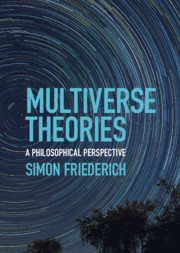10 - Other Multiverses
from Part IV - Wider Still andWilder
Published online by Cambridge University Press: 07 January 2021
Summary
This chapter discusses further types of multiverse hypotheses: the branching worlds of Everettian quantum theory, the totality of possible worlds according to David Lewis’s modal realism, and the totality of mathematical structures, which – according to Max Tegmark – are all physically realized. I argue that suggested solutions to the probability problem in Everettian quantum theory are unconvincing. A recent proposal by Sebens and Carroll to derive the Born rule in the Everettian framework using considerations about self-locating belief turns out to suffer from a circularity problem because the central principle on which the derivation is based has no independent motivation besides, possibly, appeal to the Born rule itself. I further argue that it is not possible to coherently, in full seriousness, believe David Lewis's modal realism. Nor is it possible to coherently believe Max Tegmark's thesis that there is a multiverse of all mathematical structures in which they are physically realized. Tegmark's claim that our universe is itself a mathematical universe hypothesis is found to be incoherent.
Keywords
- Type
- Chapter
- Information
- Multiverse TheoriesA Philosophical Perspective, pp. 155 - 177Publisher: Cambridge University PressPrint publication year: 2021

